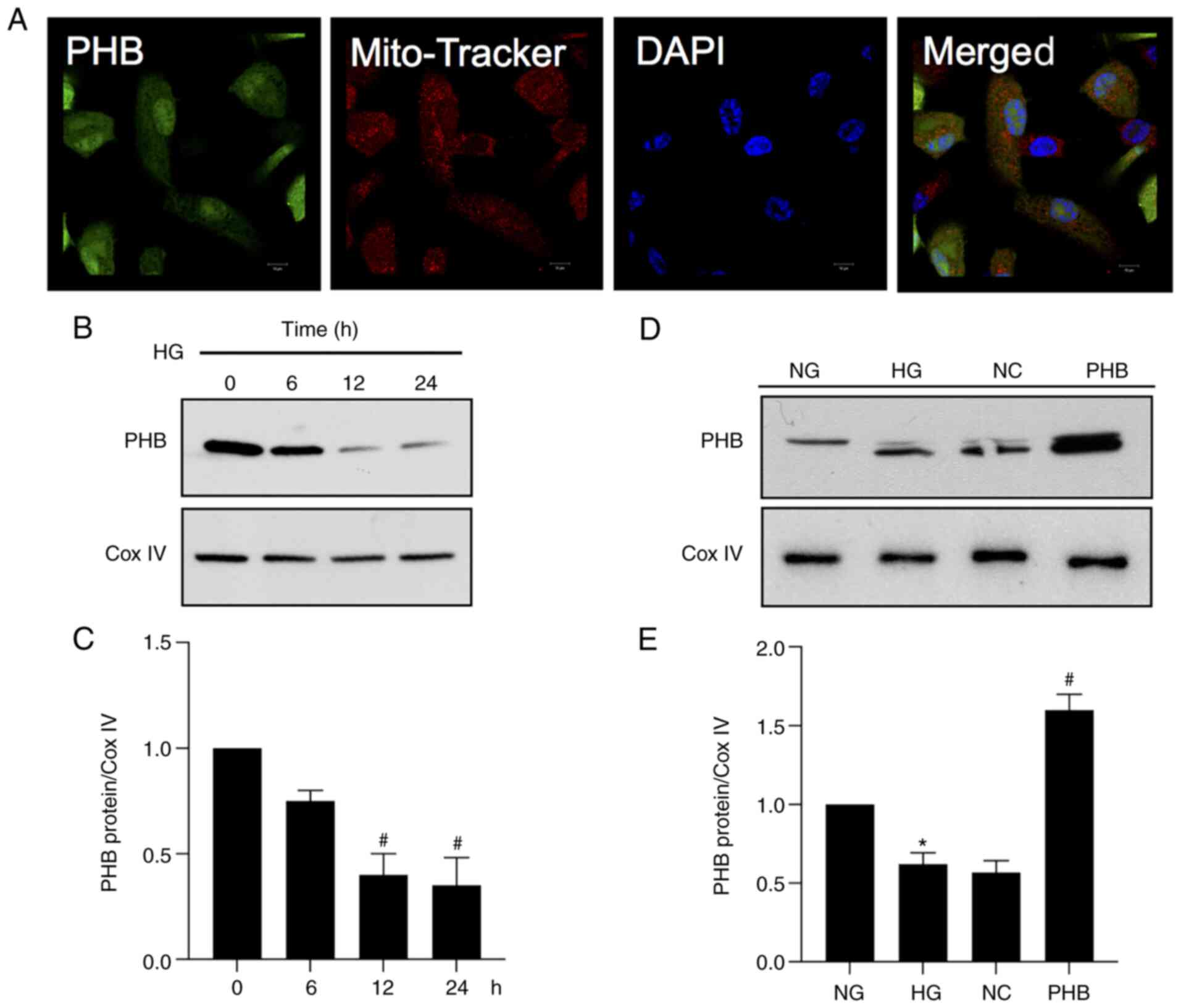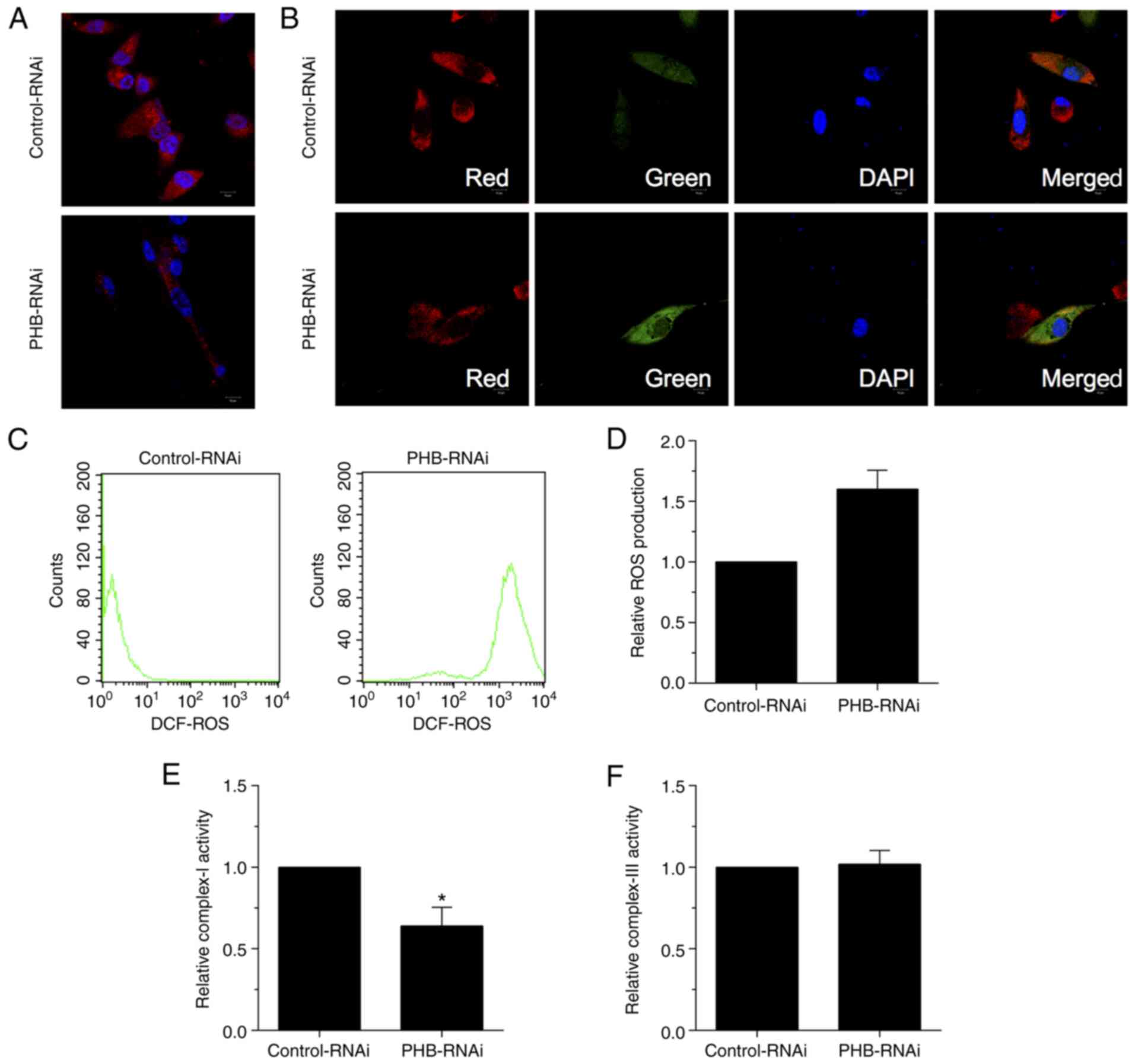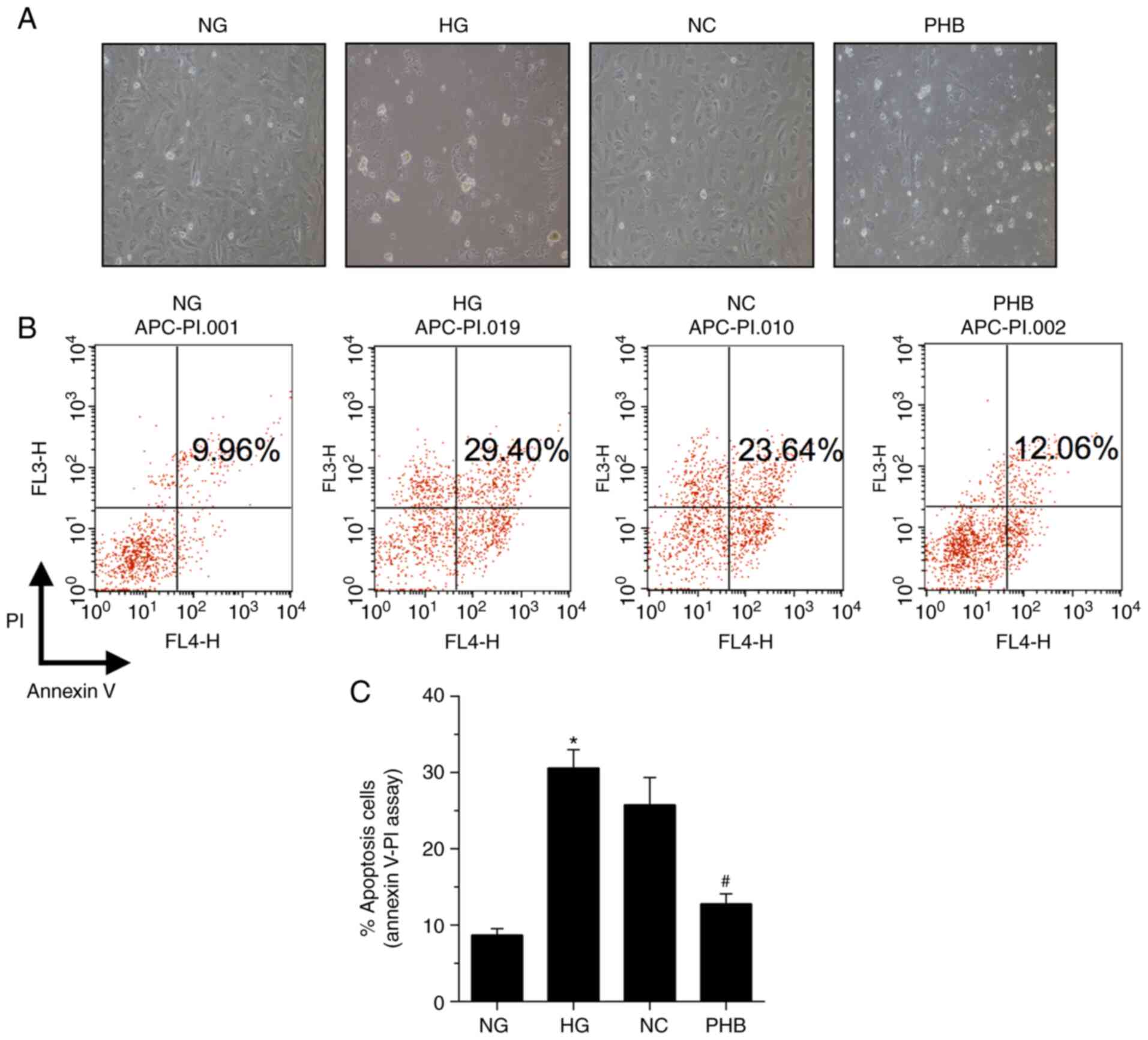|
1
|
Regina C, Panatta E, Candi E, Melino G,
Amelio I, Balistreri CR, Annicchiarico-Petruzzeli M, Di Danilele N
and Ruvolo G: Vascular ageing and endothelial cell senescence:
Molecular mechanisms of physiology and diseases. Mech Ageing Dev.
159:14–21. 2016.PubMed/NCBI View Article : Google Scholar
|
|
2
|
Volpe CMO, Villar-Delfino PH, Dos Anjos
PMF and Nogueria-Machado JA: Cellular death, reactive oxygen
species (ROS) and diabetic complications. Cell Death Dis.
9(119)2018.PubMed/NCBI View Article : Google Scholar
|
|
3
|
Wu MY, Yiang GT, Lai TT and Li CJ: The
oxidative stress and mitochondrial dysfunction during the
pathogenesis of diabetic retinopathy. Oxid Med Cell Longev.
2018(3420187)2018.PubMed/NCBI View Article : Google Scholar
|
|
4
|
Zheng H and Lu GM: Reduction of prohibitin
expression contributes to left ventricular hypertrophy via
enhancement of mitochondrial reactive oxygen species formation in
spontaneous hypertensive rats. Free Radic Res. 49:164–174.
2015.PubMed/NCBI View Article : Google Scholar
|
|
5
|
Artal-Sanz M and Tavernarakis N:
Prohibitin and mitochondrial biology. Trends Endocrinol Metab.
20:394–401. 2009.PubMed/NCBI View Article : Google Scholar
|
|
6
|
Mishra S, Ande SR and Nyomba BL: The role
of prohibitin in cell signaling. FEBS J. 277:3937–3946.
2010.PubMed/NCBI View Article : Google Scholar
|
|
7
|
Theiss AL, Idell RD, Srinivasan S,
Klapproth JM, Jones DP, Merlin D and Sitaraman SV: Prohibitin
protects against oxidative stress in intestinal epithelial cells.
FASEB J. 21:197–206. 2007.PubMed/NCBI View Article : Google Scholar
|
|
8
|
Muraguchi T, Kawawa A and Kubota S:
Prohibitin protects against hypoxia-induced H9c2 cardiomyocyte cell
death. Biomed Res. 31:113–122. 2010.PubMed/NCBI View Article : Google Scholar
|
|
9
|
Chowdhury I, Branch A, Olatinwo M, Thomas
K, Matthew R and Thompson WE: Prohibtin (PHB) acts as a potent
survival factor against ceramide induced apoptosis in rat granulosa
cells. Life Sci. 89:295–303. 2011.PubMed/NCBI View Article : Google Scholar
|
|
10
|
He Y, Wang N, Shen Y, Zheng Z and Xu X:
Inhibition of high glucose-induced apoptosis by uncoupling protein
2 in human umbilical vein endothelial cells. Int J Mol Med.
33:1275–1281. 2014.PubMed/NCBI View Article : Google Scholar
|
|
11
|
Peng YT, Chen P, Ouyang RY and Song L:
Multifaceted role of prohibitin in cell survival and apoptosis.
Apoptosis. 20:1135–1149. 2015.PubMed/NCBI View Article : Google Scholar
|
|
12
|
Vinogradov AD and Grivennikov VG:
Oxidation of NADH and ROS production by respiratory complex I.
Biochim Biophys Acta. 1857:863–871. 2016.PubMed/NCBI View Article : Google Scholar
|
|
13
|
Beltramo E, Nizheradze K, Berrone E,
Tarallo S and Porta M: Thiamine and benfotiamine prevent apoptosis
induced by high glucose-conditioned extracellular matrix in human
retinal pericytes. Diabetes Metab Res Rev. 25:647–656.
2009.PubMed/NCBI View Article : Google Scholar
|
|
14
|
Naruse K, Nakamura J, Hamada Y, Nakayama
M, Chaya S, Komori T, Kato K, Kasuya Y, Miwa K and Hotta N: Aldose
reductase inhibition prevents glucose induced apoptosis in cultured
bovine retinal microvascular pericytes. Exp Eye Res. 71:309–315.
2000.PubMed/NCBI View Article : Google Scholar
|
|
15
|
Romeo G, Liu WH, Asnaghi V, Kern TS and
Lorenzi M: Activation of nuclear factor-kappaB induced by diabetes
and high glucose regulated a proapoptotic program in retinal
pericytes. Diabetes. 51:2241–2248. 2002.PubMed/NCBI View Article : Google Scholar
|
|
16
|
Cui Y, Xu X, Bi H, Zhu Q, Wu J, Xia X,
Qiushi Ren and Ho PC: Expression modification of uncoupling
proteins and MnSOD in retinal endothelial cells and pericytes
induced by high glucose: The role of reactive oxygen species in
diabetic retinopathy. Exp Eye Res. 83:807–816. 2006.PubMed/NCBI View Article : Google Scholar
|
|
17
|
Zhou TB, Qin YH, Zhou C, Lei FY, Zhao YJ,
Chen J, Su LN and Huang WF: Less expression of prohibitin is
associated with increased caspase-3 expression and cell apoptosis
in renal interstitial fibrosis rats. Nephrology (Carlton).
17:189–196. 2012.PubMed/NCBI View Article : Google Scholar
|
|
18
|
Chowdhury I, Thompson WE, Welch C, Thomas
K and Matthews R: Prohibitin (PHB) inhibits apoptosis in rat
granulosa cells (GCs) through the extracellular signal-regulated
kinase1/2 (ERK1/2) and the Bcl family of proteins. Apoptosis.
18:1513–1525. 2013.PubMed/NCBI View Article : Google Scholar
|
|
19
|
Mantena SK, Sharma SD and Katiyar SK:
Berberine inhibits growth, induces G1 arrest and apoptosis in human
epidermoid carcinoma A431 cells by regulating Cdki-Cdk-cyclin
cascade, disruption of mitochondrial membrane potential and
cleavage of caspase 3 and PARP. Carcinogenesis. 27:2018–2027.
2006.PubMed/NCBI View Article : Google Scholar
|
|
20
|
Schrier SA and Falk MJ: Mitochondrial
disorders and the eye. Curr Opon Ophthalmol. 22:325–331.
2011.PubMed/NCBI View Article : Google Scholar
|
|
21
|
Zhang W, Liu H, AI-Shabrawey M, Caldwell
RW and Caldwell RB: Inflammation and diabetic retinal microvascular
complications. J Cardiovasc Dis Res. 2:96–103. 2011.PubMed/NCBI View Article : Google Scholar
|


















